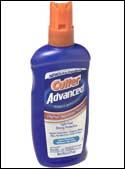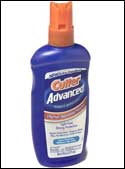Deetderived as an acronym for di-ethyl-toluamidewas developed in the 1950s and remains the world’s most effective bug repellent. In most cases it’s reasonably safe, provided you don’t pickle yourself in high concentrations of the stuff. Caution is advised for children, however (10 percent dilutions or less; repellent applied to clothing rather than skin). And deet has well-documented solvent qualities that can be hard on plastics and similar materials.
 Cutter Advanced
Cutter Advanced
A lot of people tout alternatives based on soybeans or citrus. Some are moderately effective. But none works as well as deet nor lasts as long. Now, however, there are some effective alternatives. For years, a repellent called Picaridin (pee-CAR-ee-den) has been available in Asia and Europe. Tests show that it works more or less as well as deet (maybe even better in some cases), poses no risk to adults or children, doesn’t cause plastic to melt, and is generally much more pleasant. Picaridin was made available in the U.S. market last summer in Cutter Advanced bug juice ($6 for a six-ounce bottle; www.cutterinsectrepellent.com).
S.C. Johnson, the makers of the popular, deet-based Off! repellents, also markets a Picaridin product (which the Johnson folks call Picaridin Autan). It goes by Skintastic CleanFeel, and contains 5 percent Picaridin (the Cutter is 7 percent). Sells for $5 for a six-ounce bottle.
I’d like to hear some feedback on these things from people in bug-intensive states. At least one competitor claims Picaridin doesn’t work. And what with the threat of West Nile virus and all, bug repellents have become serious stuff, not just a way to deter a moderate nuisance.


